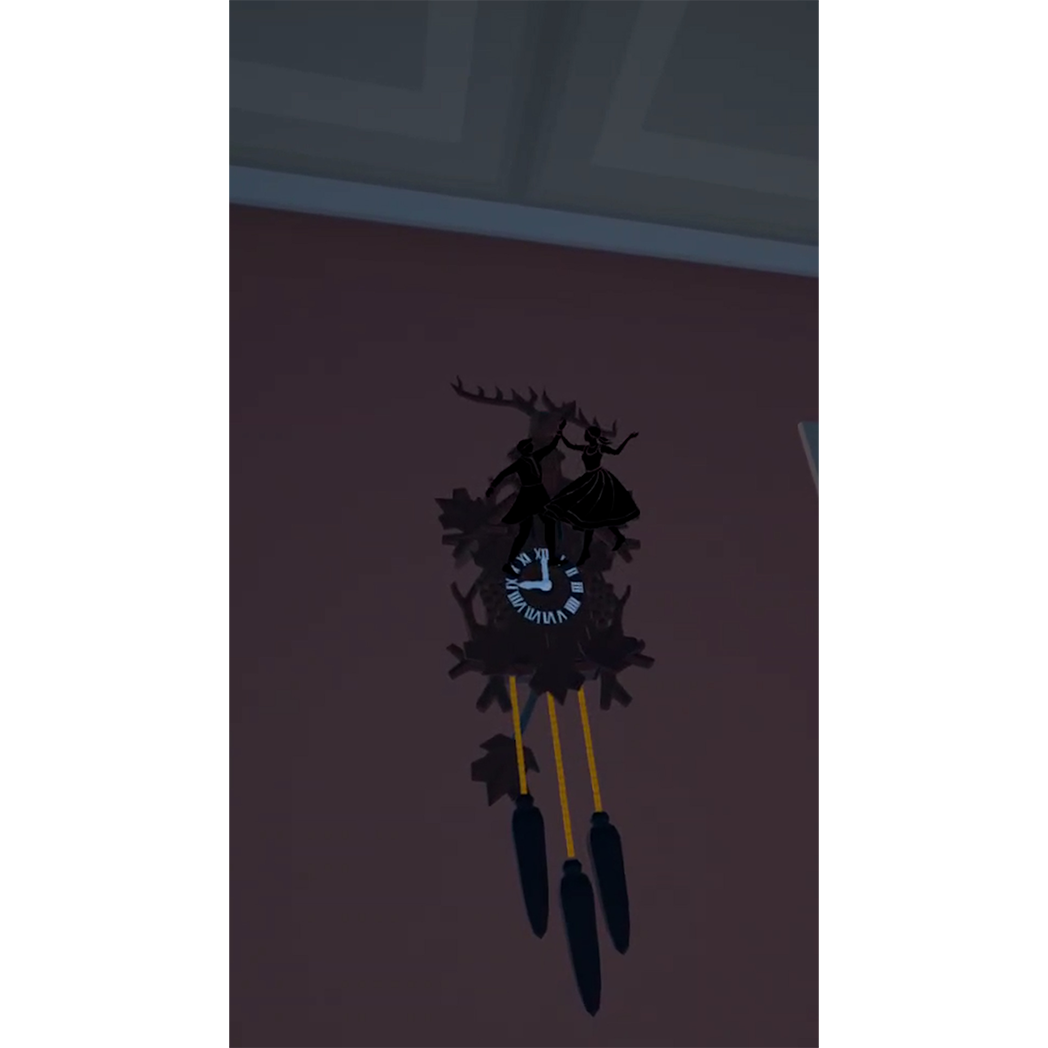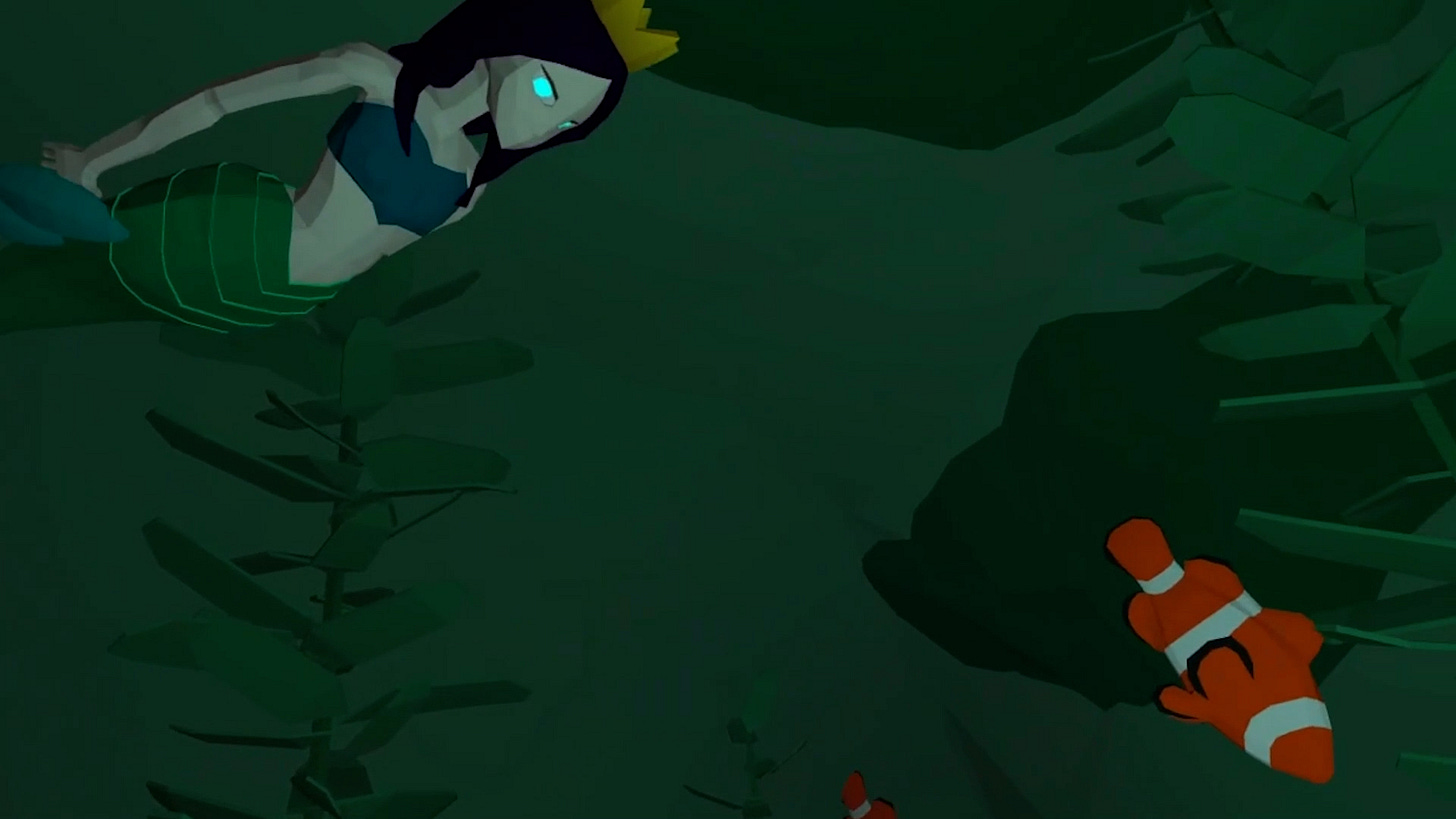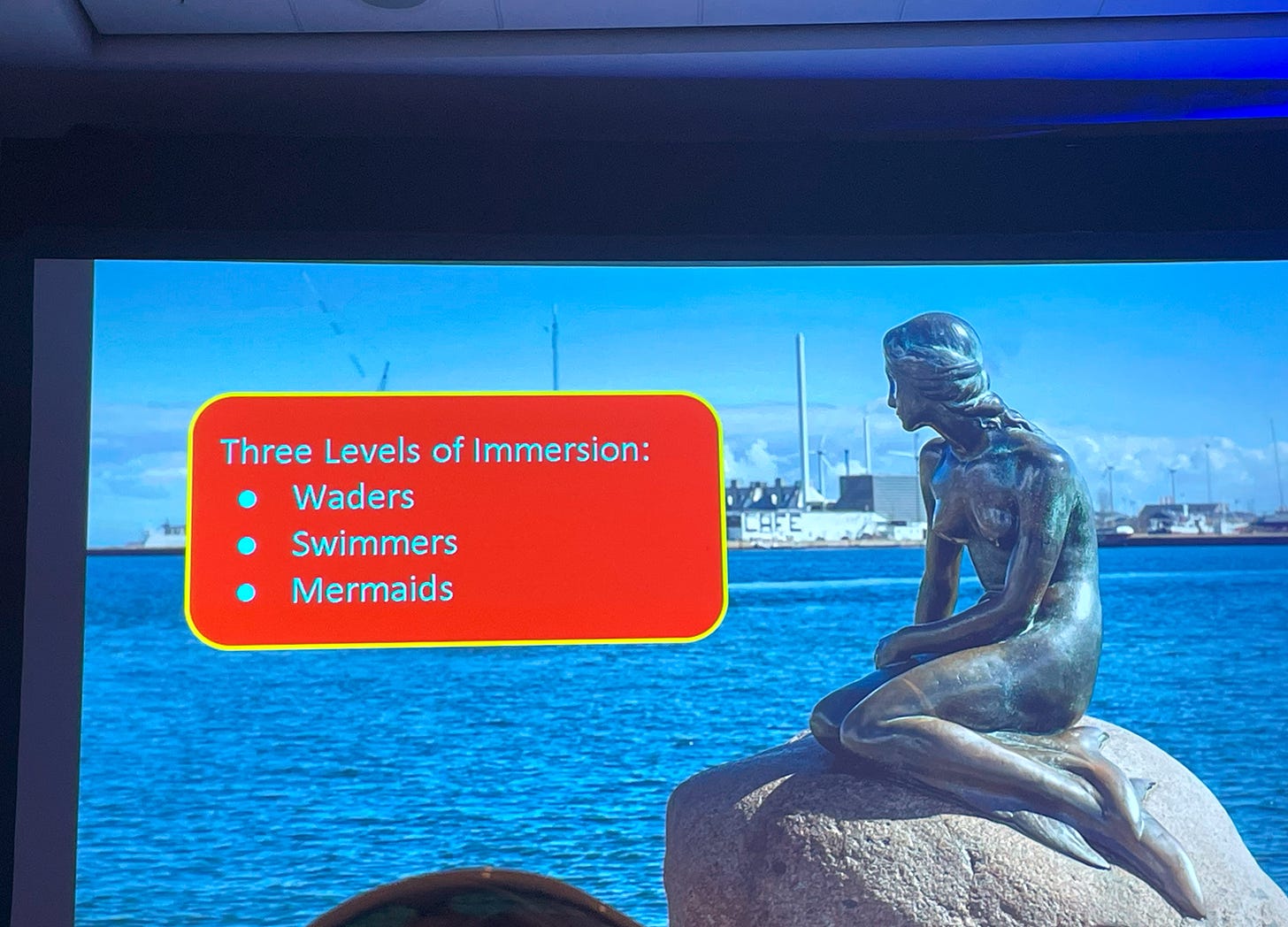
Everyone experiences art differently. Some take it in on a surface level. Others pause to ask questions. And a rare few go deep into the details, searching for the artist’s intent or hidden meaning. This is where the magic lies for me, and where I have the best chance to deliver beauty and awe to the audience. Naturally, I’ve always enjoyed designing for those who want to go deep.
Players come in many varieties, which can be understood through the concept of immersion levels. Joshua Rubin described this beautifully in his AWE 2024 talk, STORY LIVING: 10 Tools from Video Games & Immersive Theater to Make Story Worlds in the Metaverse. I was there in person, and I have to admit I cried! That presentation made a big impact on me and validated my desire to create for what he called the mermaids.
Who are these mermaids?
First, there are the waders. They might not care much about the story and simply want to casually enjoy the visuals or mechanics without much thought. Swimmers go further, immersing themselves in a story with the expectation of being entertained. But it’s the mermaids who spend the most time exploring, seeking out every secret and meaning within a story’s themes, metaphors, and messages.
Are you wading at the shore, swimming through the current, or diving deep like a mermaid?
My design philosophy aligns with a mermaid’s style of play. It connects back to the kinds of films I love too. Instead of gratuitous CGI in big-budget action movies, I prefer films that can unfold in a single, slow-moving place. Whenever I see a review on Rotten Tomatoes that says a film is boring, slow, or unclear, I know it’s probably one I’ll love. In a world overflowing with noise and distraction, liminal spaces, the tranquil almost otherworldly corners of experience, give us a chance to breathe. This is also why low-poly VR worlds don’t bother me. I grew up with Atari and 8-bit graphics, imprinting my own stories on those simple visuals and gameplay. With an active imagination, you don’t need extravagant tools to execute your vision. Mystery is important because it invites deeper discussion too. It’s a quiet kind of magic that respects not only the artist’s creativity and humanity, but also the audience’s.
How I design for mermaids
As I work on the cabin environment for The Dream Lodge, I’m intentional about both object placement and interaction design. There still needs to be enough to do for the waders and swimmers alike. But once that foundation is set, I step back and look at the space as a whole, asking what small touches can bring it to life without overwhelming the player and cluttering the environment.
A lot of planning goes into choosing what to include and what to leave out. Currently I’m at the polishing stage, and at the last minute I added a cuckoo clock interaction.
Since the backstory will be available in a future version, I thought this clock could act as a foreshadowing device — a tiny addition that deepens the world. The pendulum is coded to randomly stop, and the clock itself isn’t perfectly accurate, on purpose. Observant players get to realize their attention to detail, and I love how it makes one question what is “real” or “accurate.”
To capture the magical realist vibe I aim for, I usually begin with realism, mimicking the physical world. That makes the subtle breaks more powerful, reminding players that they are in a virtual world where different rules apply. For example, I initially designed a cat door on the cabin’s main one so the cat could go inside. After testing, the physics felt frustratingly inaccurate and, honestly, boring.
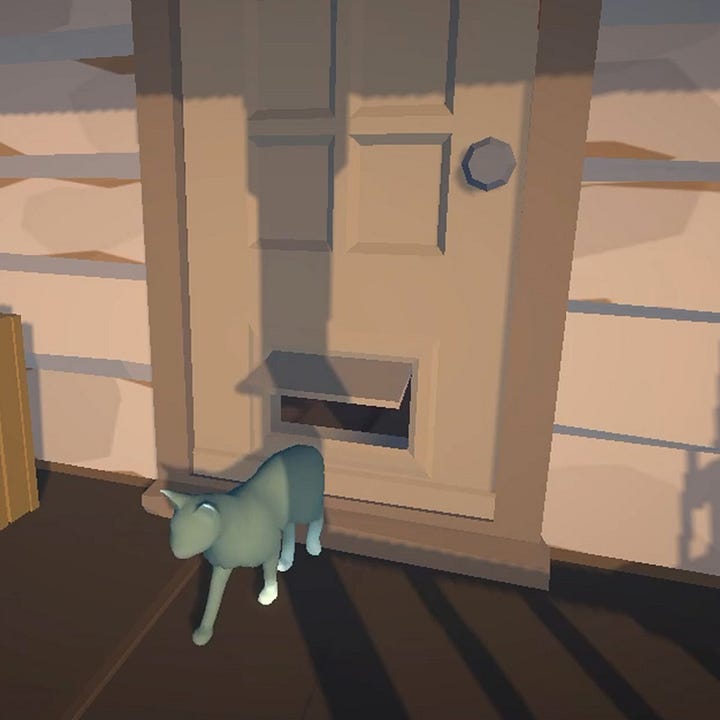
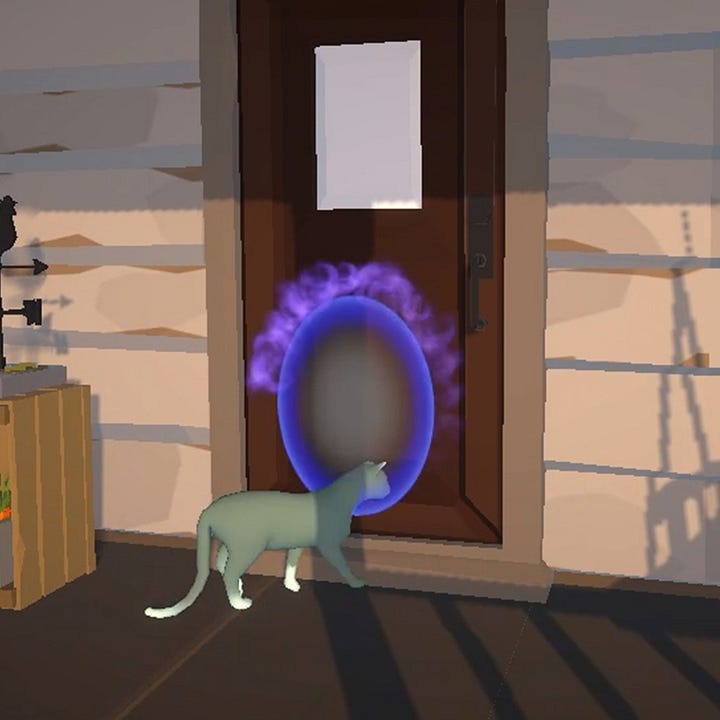
Given that the cat’s texture is already abstract and otherworldly, I replaced the door with a portal. Now, when the cat enters the cabin, a portal appears. Juxtaposing the familiar cabin with this fleeting magical moment creates a sweet spot between real and unreal.
Designing for mermaids takes advantage of VR as a medium. It allows creators to highlight the little, engaging details that only immersive spaces can deliver. XR doesn’t need to chase mass-market gamified design alone. There’s space for more poetic, contemplative, and surreal works. And these experiences teach us presence, how noticing what feels “off” in VR can train us to notice what feels off in real life.
Not everyone is a mermaid, and that’s okay. What excites me about designing for them is the shared joy of finding unforgettable works of art that speak directly to us. My VR narrative Mermaid Song might even be my personal declaration of who I create for. Its main character goes so deeply into her emotions that she becomes lonely.
But by recognizing ourselves in a character, or finding resonance in layered themes and metaphor, we’re reminded of our shared humanity and of what is precious in life.
What small details are you weaving into your own narratives? How do they bring you closer to yourself as an artist or creator and, in turn, to your audience?


